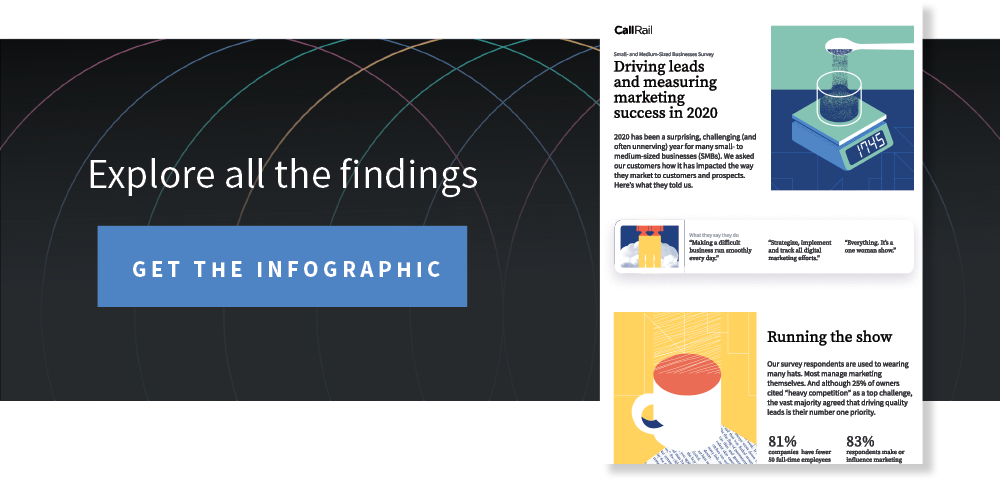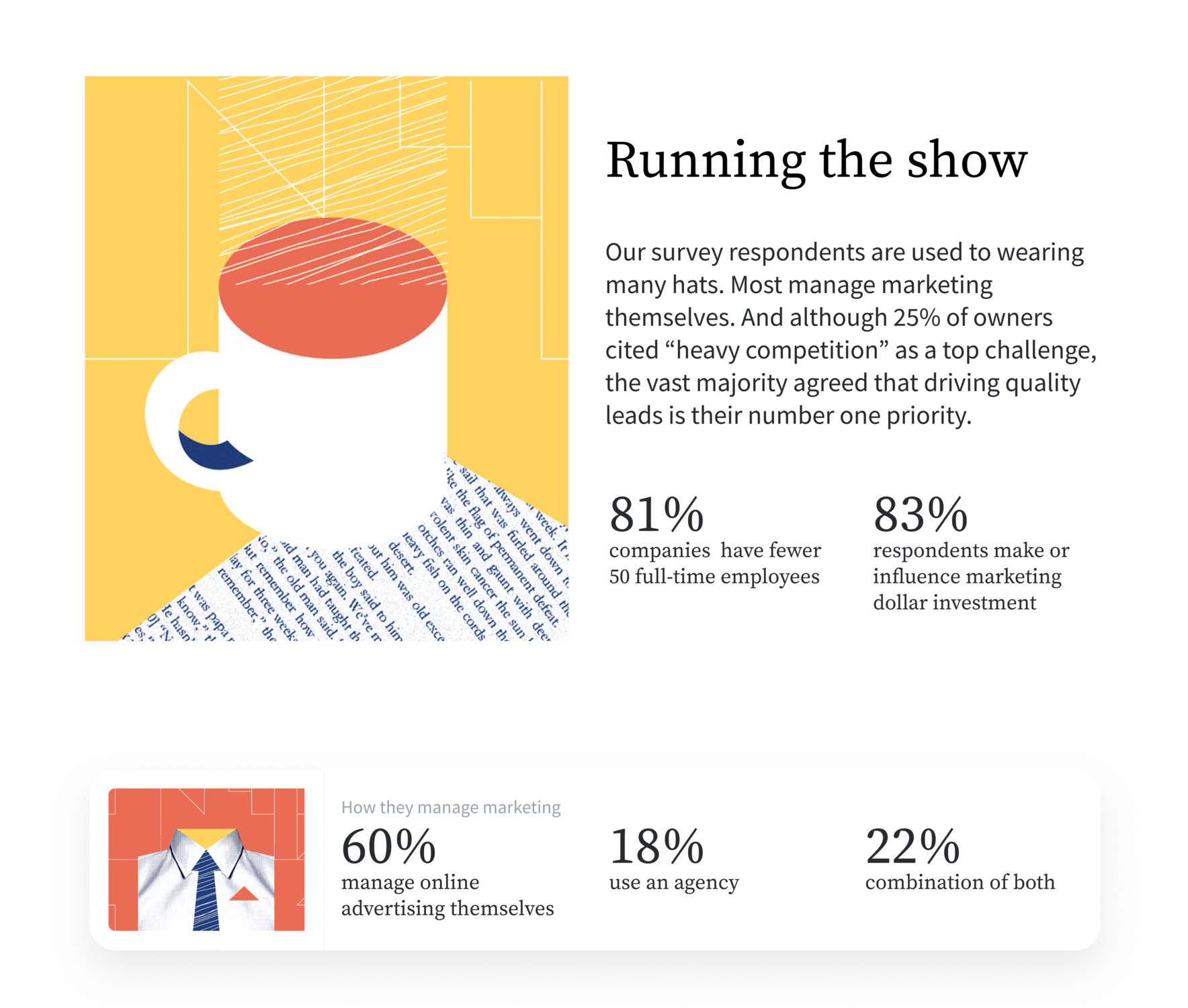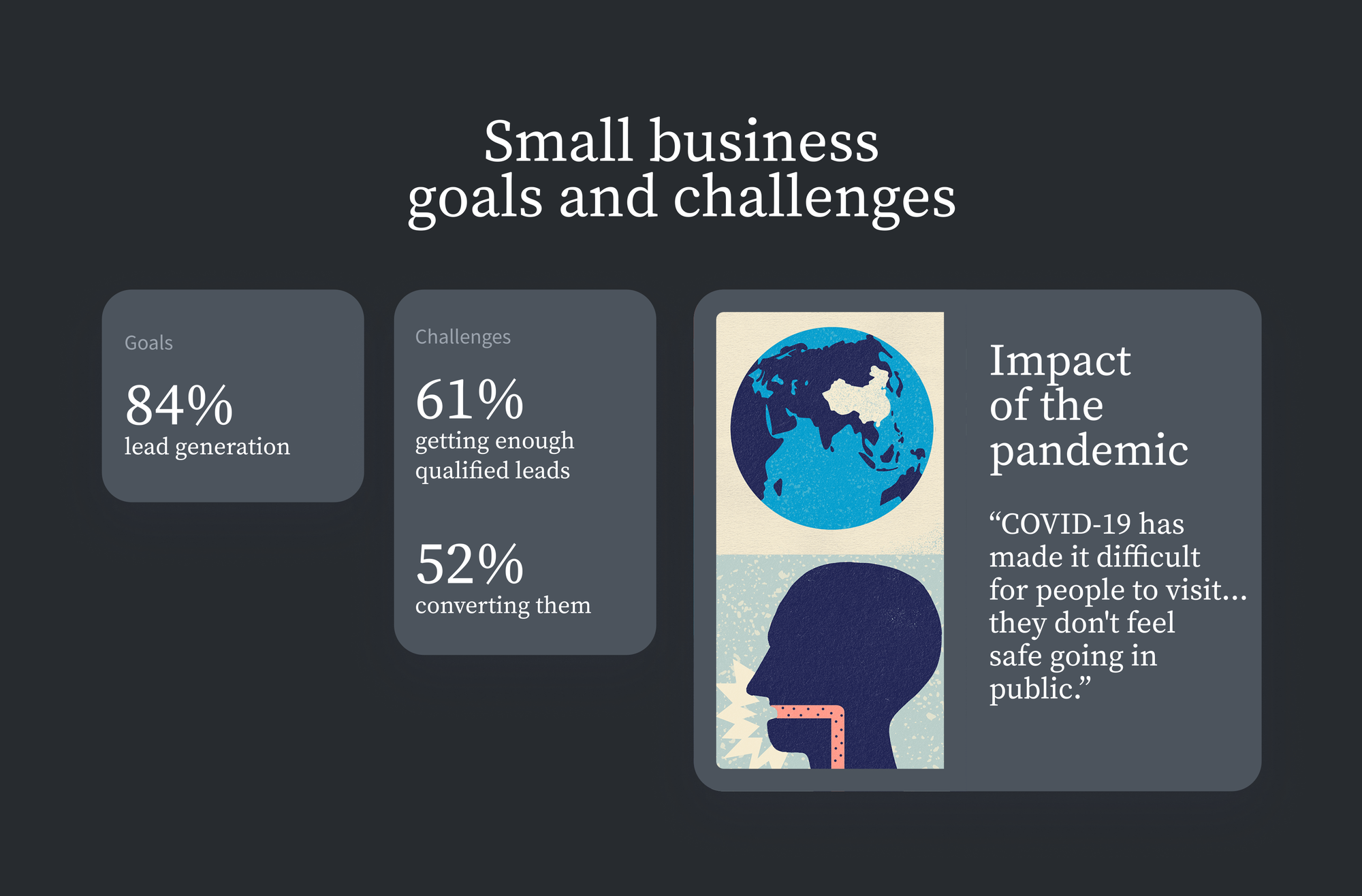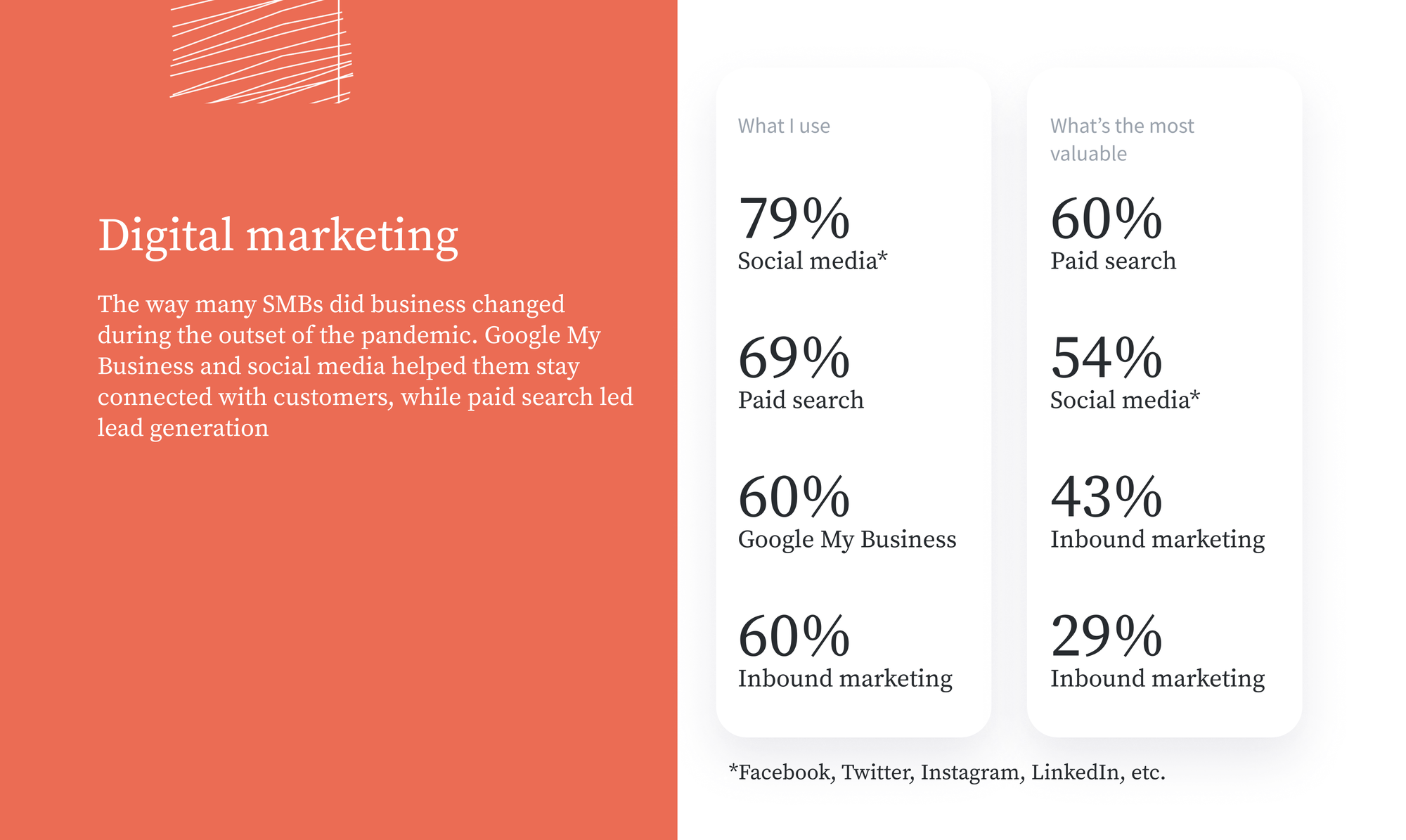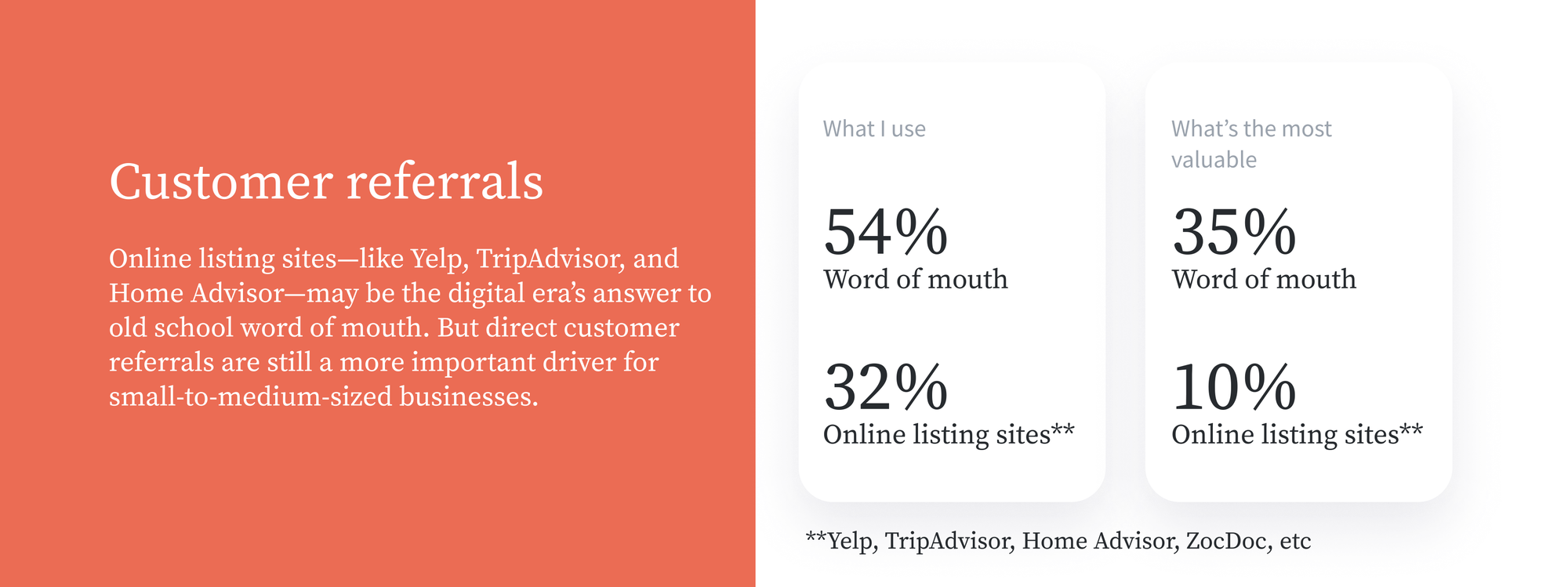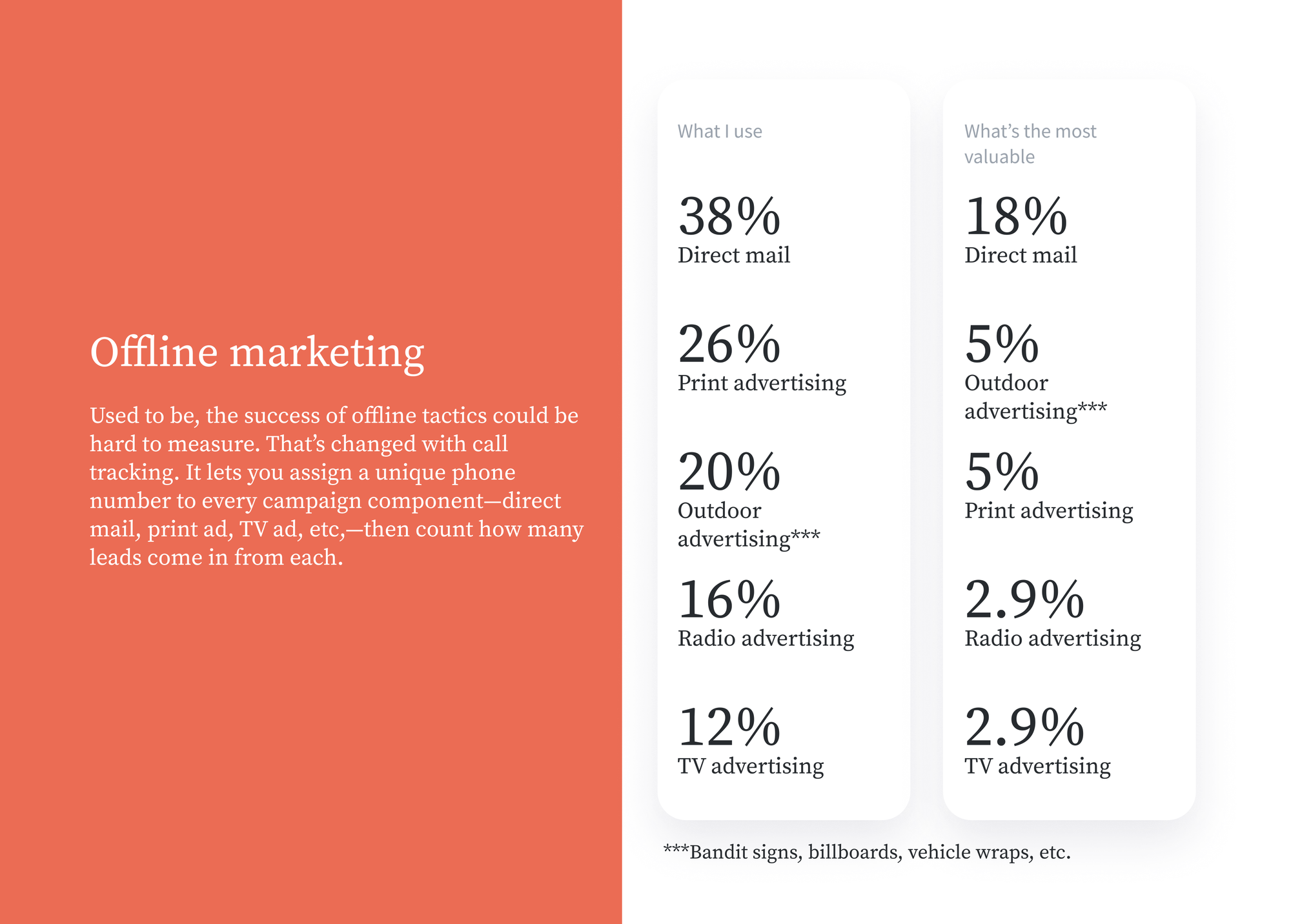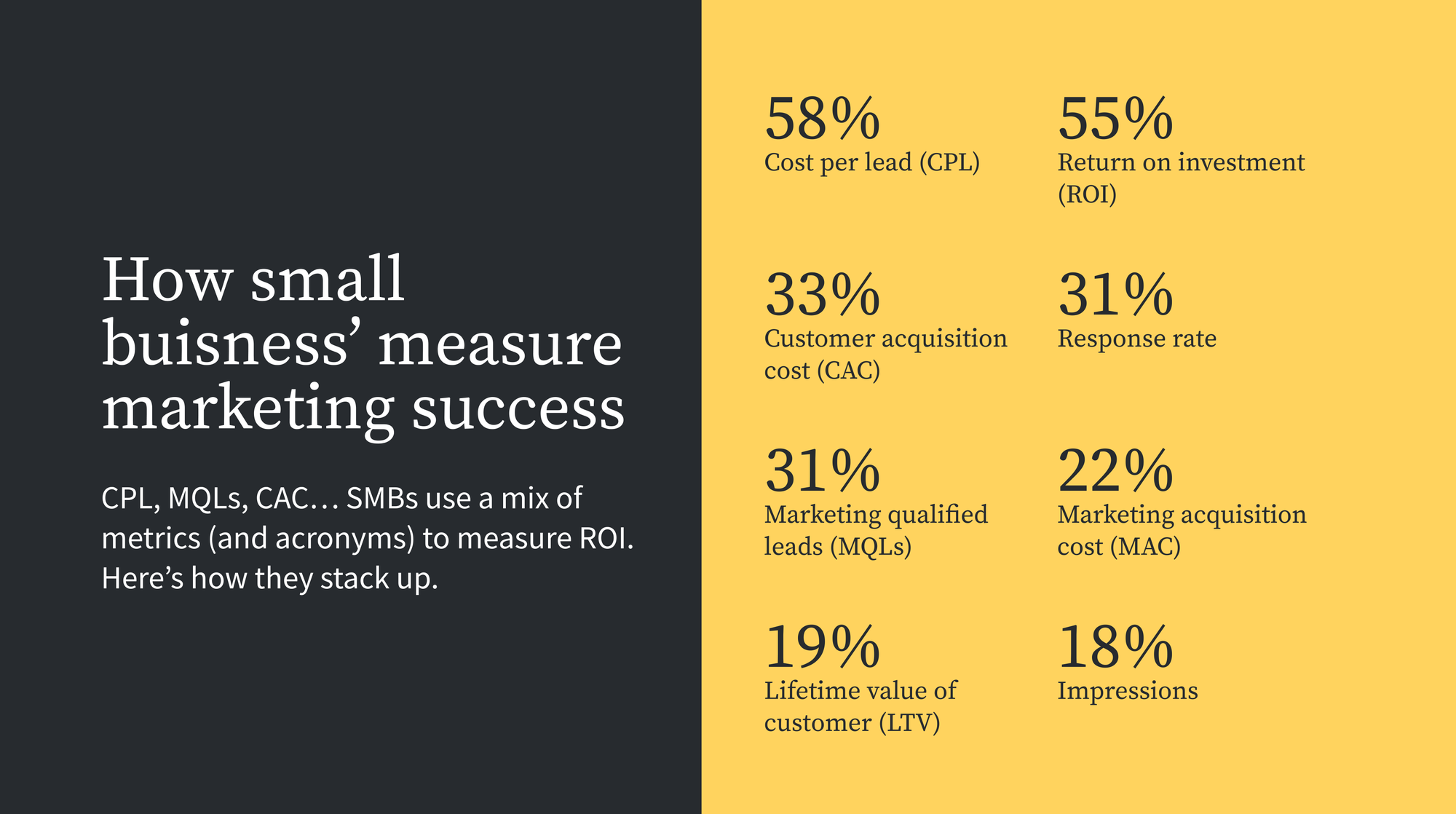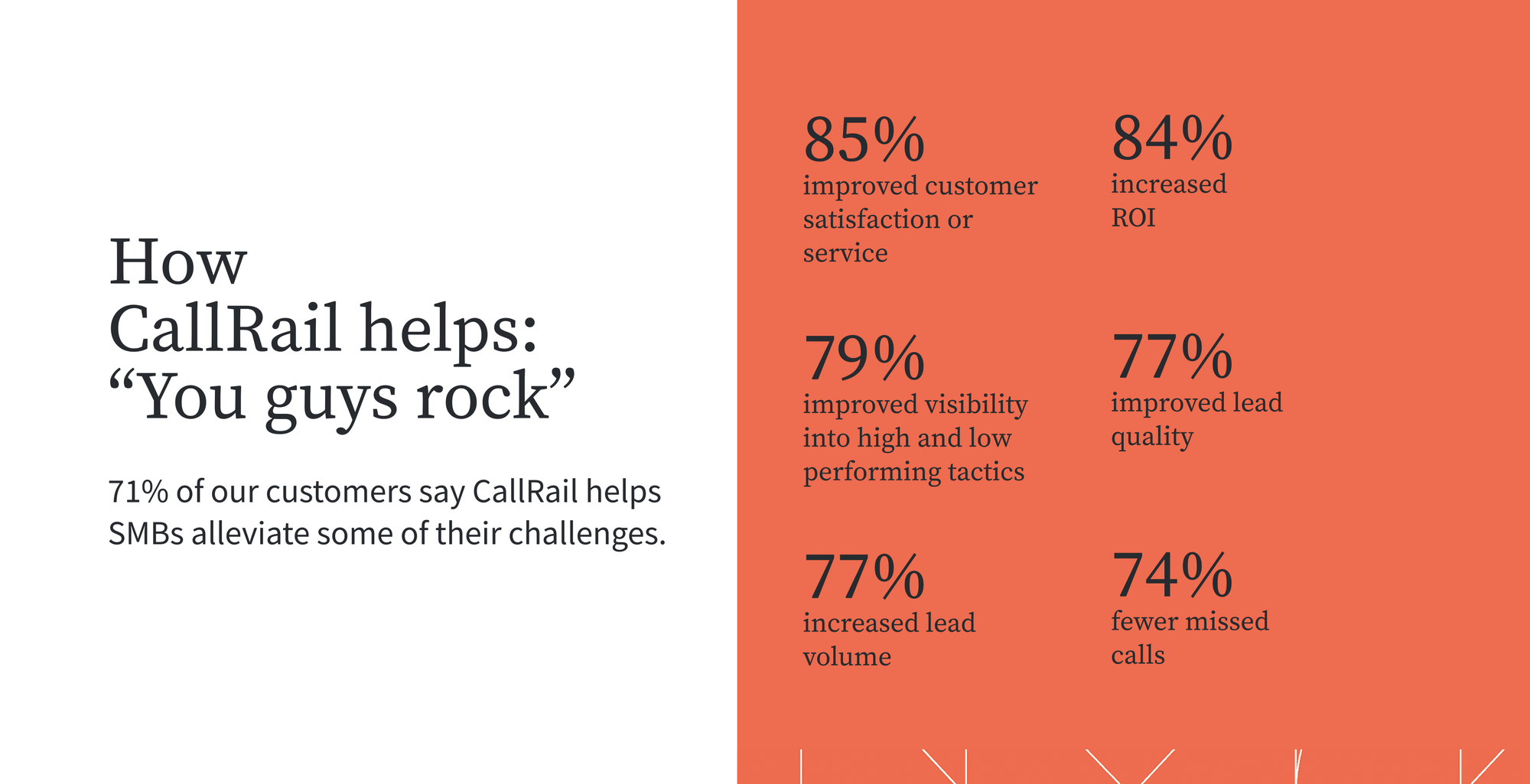It’s been a trying year for many small-to-medium-sized businesses (SMBs). But it has also shown us how resilient they are. From adapting their operational models to better meet customer needs and devising creative, innovative ways to stay top of mind with their target market, businesses have adapted and found their footing amid all the uncertainty.
And yet, we’re still curious as to how they’ve been able to manage it all. Precisely how have SMBs navigated the pandemic? What challenges have they faced? How has their marketing efforts been impacted?
We launched a survey earlier this year to get to the bottom of these questions and more. Read on to learn more about our findings.
The makeup of our survey respondents
We surveyed over 200 SMBs across multiple industries: home services, legal, healthcare, auto, financial services, real estate, software/tech, travel, and hospitality. Of those who participated, 81% had fewer than 50 full-time employees, and 83% of respondents make or influence marketing dollar investment.
Not surprisingly, our respondents are used to wearing many hats. In fact, 60% said they oversee marketing for their organizations, with 18% using an agency and 22% claiming to use a mixture of both. When questioned what the number one challenge they faced, 25% of owners cited “heavy competition.” Still, the vast majority agreed that driving quality leads is the number one priority during the pandemic. And it makes sense.
The pandemic has prompted businesses to rethink the way they communicate and keep transactions going. Customers wary about in-person interactions shifted the way they consume, preferring digital channels to learn more about a business before picking up the phone to get their most pressing questions answered.
Ultimately, this resulted in an influx of business calls – a 79% increase in call volume, according to our research. With so many calls to field, it’s easy to see why focusing only on quality leads is a top priority for SMBs. Let’s dig deeper.
Small business goals and challenges
One of the respondents echoed the challenge of the pandemic best. “COVID-19 has made it difficult for people to visit…they don’t feel safe going in public.” As more customers rely on the internet to guide their purchases, the competition to reach them has increased.
This was reflected by our survey responses. While 84% of participants cited lead generation as the top priority, getting enough qualified leads and converting them posed a barrier. That’s because now more than ever, SMBs realize the benefits of having an online presence.
In a study of 500 small business owners by Visual Objects, 29% of respondents now plan to start using a website in 2020 to boost their success. And 60% plan to rely more heavily on their website as a marketing channel.
So, if a digital presence is essential to lead generation, which marketing tactics are these SMBs focusing on to achieve their goals? Are all marketing efforts focused solely on the online world, or is there room for a few offline activities?
Understanding the current marketing mix
Based on our survey responses, it’s evident that SMBs rely on a mix of ads and referrals to reach their target audience. Still, there’s a difference between the marketing efforts they rely on and those that work best. Let’s compare responses for digital marketing, customer referrals, and offline marketing.
Digital Marketing
Being able to communicate with customers and prospects online is more critical. But which channels do SMBs rely on?
Social media (79%) and Google My Business profile (60%) were the channels of choice in helping SMBs maintain and grow their existing relationships with customers. Paid search (69%) was the top choice for lead generation programs.
Customer referrals
Customers referred by friends are four times more likely to buy, have 16% higher lifetime value, and account for 65% of companies’ new deals. It’s not shocking to see why SMBs are still doubling down on this tried-and-true marketing tactic. While 32% of SMBs are using online reviews to drum up customer referrals, 54% still prefer the word-of-mouth approach and find it more valuable than its digital counterparts — Yelp, Trip Advisor, Home Advisors, etc.
Offline marketing
If you believe offline marketing is dead, think again. Technology like call tracking allows businesses to measure their success. By assigning unique phone numbers for every campaign component — direct mail, print ad, TV ad, etc. — businesses can track how many leads come from each. As a result, SMBs can make better-informed marketing investments.
Our survey shows the top three offline channels are direct mail (38%), print advertising (26%), and outdoor advertising (20%). These same channels were also deemed the most valuable.
How SMBs measure success
There are several metrics businesses can use to measure their marketing’s performance. But which ones are the best indicator for success? According to our respondents, they’re cost per lead (58%), ROI (55%), and customer acquisition cost (31%).
This wasn’t a surprise since they also told us their main goal for 2020 was to drive qualified leads. Having a good handle on your cost per lead comes in handy when using paid search to fill your sales funnel. Likewise, ROI tells you if your marketing efforts are working. And the same holds true for customer acquisition cost.
Where call tracking fits in
Competition has intensified, and the marketing landscape has become increasingly saturated. Knowing which marketing works helps small businesses drive more qualified leads and gain a competitive edge.
Call tracking software, like CallRail, helps businesses gain the clarity they need to spend their marketing dollars smarter. Because the platform gives them more predictability and insights into how to generate leads, they’re better able to fine-tune and optimize their marketing to deliver better outcomes. And 71% of survey respondents say that CallRail has helped them alleviate their challenges.
Additionally, 85% of respondents have seen an improvement in customer satisfaction, 84% reported an increase in ROI, and 79% claimed to have seen an improvement in visibility into high and low performing tactics.
Here’s what one had to say about using CallRail: “We know exactly what marketing works. The math is there to take control of bad campaigns and good campaigns. We know what makes the phone ring.”
Looking beyond 2020
2020 put many businesses to the test. It forced them to reevaluate their current operating models, how to better communicate with customers, and implement organizational changes at scale, rapidly. But 2020 also showed us that SMBs are incredibly adaptable. Not only can they pivot with ease, but they can grow despite adversity.




